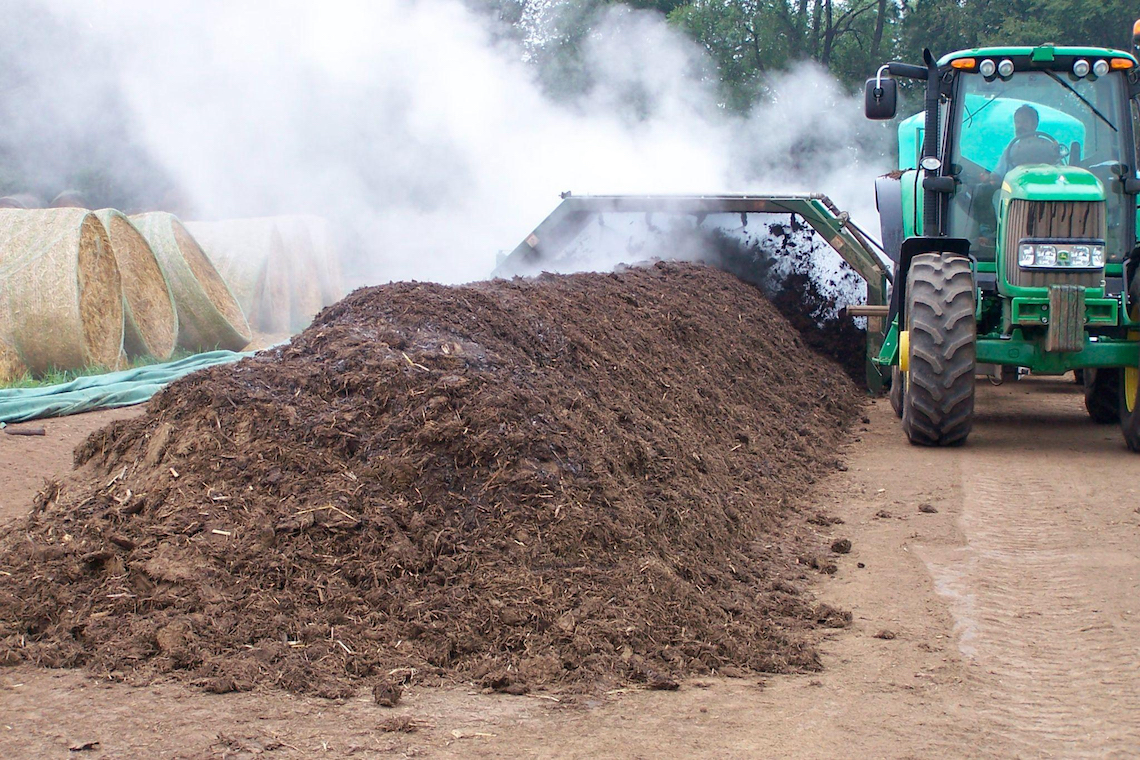
Composting – It’s Important – and Easy!
By Francesca Kelly for Go Green Highland Park
Composting used to be a thing that your wacky neighbor did in his backyard, or, in my case, my cheapskate father, who wouldn’t dream of paying for something when he could make it himself at no cost.
But now, composting has taken off, and for more reasons than just saving money. Nearly 40 percent of American food is wasted. And most discarded food goes to landfills, where it creates methane, a potent greenhouse gas, as it decomposes. And you already know how bad those greenhouse gases are for our rapidly warming planet. Plus, American landfills are getting full!
So it makes logical sense to compost for several reasons. Why throw out vegetable peelings and grass clippings and dead leaves when together they create such a nutritious mix for the garden? Why discard food scraps and haul away dead leaves, and then go buy a bag of compost? Why add more greenhouse gases to the atmosphere, when these materials, when composted and aerated, decompose in a way that doesn’t produce nearly as much methane? And why hasten the closure of our landfill in Zion, which is almost at capacity?
Highland Park residents are lucky that the city has included compost pick up in our trash hauling contract with LRS. We’ve all received yellow-topped bins where we can put all food scraps, grass clippings, leaves, shredded paper and yard waste. So, even if you’re not interested in home composting for your own garden, you can still do your part to keep food and yard waste out of the landfill. The advantage of Highland Park’s composting program is that you can put many more items in your yellow-topped bin than you would be able to compost in your fr backyard. That’s because LRS uses industrial composting. That means you can throw all food — including dairy, meat and bones – into that yellow-topped bin. You can toss in all yard waste including branches. You can throw those grease-stained pizza boxes in, and you can even use BPI-certified compostable bags (check labels – normal plastic bags are NOT acceptable. And it is never safe to compost pet waste).
If you are interested in composting for your own garden, here are some steps to get you going:
1. Use a countertop compost container (the lid has a built-in filter to offset odors) to easily collect vegetable peelings, coffee grounds, egg shells, moldy fruit, and other food scraps — but no dairy or meat). Countertop composting bins are available in local stores and online.
2. When this gets full, empty it into a compost pile or composting container in your yard. Composting bins are available at garden centers and larger hardware stores.
3. Add dry leaves and shredded paper to this composting container to keep a good mix of “brown” vs “green” materials. Turn contents with a pitchfork to aerate once a week or so.
4. After a few months, the substances will break down into a fine dark earthy material that’s perfect for feeding your gardens and plants.
A few notes:
· You don’t technically need a composting bin – you can simply designate an area of your yard for a compost pile. However, food scraps should not be put in open compost piles as they can attract critters.
· Some compost bins have separate compartments for new compost and older compost. This allows for compost to be formed and then “aged” while newer scraps go in a separate compartment. You can also separate compost piles so there’s a newer and an older pile.
· Some compost bins have a built-in turning device so that you don’t need a pitchfork to aerate the contents.
· What to put in compost? Vegetable peelings, onion skins, coffee grounds, egg shells, tea leaves, and other food scraps, as well as grass clippings, dead leaves, yard waste, and shredded paper.
· What NOT to put in backyard compost? Meat, dairy , animal waste, weeds that have active seeds, branches (these won’t break down).
So, we have choices! We can throw a whole lot of stuff into the yellow-topped bins and let LRS compost it for us. We can do our own composting in our own backyard. Or we can do both!
Find Chicago area ICAW events and loads of composting resources for homes, business, schools and more at https://illinoiscomposts.org/
For a list of exactly what you can put in the yellow-topped bin (a lot more than you think!), visit this web page: https://swalco.recyclebycity.com/compost-only/guide
Here’s a nifty little backyard composting guide: https://www.almanac.com/how-compost-guide-composting-home
And, check out this fun video for you and your kids to watch about the importance of composting: https://www.youtube.com/watch?v=bqDQD8cvO5Y\
